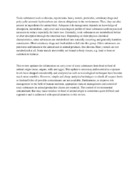| dc.description.abstract | Toxic substances such as dioxins, mycotoxins, heavy metals, pesticides, veterinary drugs and polycyclic aromatic hydrocarbons are almost ubiquitous in the environment. Thus, they are also present in ingredients for animal feed. Adequate risk management depends on knowledge of absorption, metabolism, carry-over and toxicological profile of these substances and on practical measures to reduce especially the latter two. Generally, toxic substances are metabolized before or after absorption through the intestinal tract. Depending on their physico-chemical characteristics, some substances are metabolized into naturally occurring and generally harmless constituents. Most veterinary drugs and feed additives fall into this group. Other substances are persistent and remain in the animal and in animal products, like dioxins. Heavy metals are not metabolized at all. Some metals irreversibly are bound to body tissues, e.g. lead to bone or cadmium to kidneys.
This review updates the information on carry-over of toxic substances from feed to food of animal origin (meat, organs, milk and eggs). This update is necessary and essential as exposure levels have dropped considerably and analytical as well as toxicological techniques have become much more sensitive. However, simple and cheap analytical techniques to check all suspect feeds or feedstuffs for all possible contaminants are not available. Furthermore, to improve risk management in the field of human nutrition, appropriate data on management and control of toxic substances in animal production chains are essential. The control of environmental contaminants that may cause residues in food of animal origin is sometimes quite difficult and expensive and is addressed with special attention in this review. | en_US |

